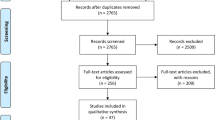Abstract
Background
Pain, ecchymosis, and edema are major postoperative transient complications of septorhinoplasty procedures. They increase the patient’s anxiety and decrease satisfaction levels as well as extend recovery time in the early postoperative period. The aim of this study was to compare the effects of total nasal block (TNB) and central facial block (CFB) on postoperative pain, edema, and ecchymosis.
Methods
A total of 60 consecutive patients enrolled in this study and were divided into three groups as Controls (n = 20), TNB (n = 20), and CFB (n = 20). The two block methods mentioned above were performed at both the beginning and end of the surgery in the TNB and CFB groups. The Control group was not subjected to any block methods. Pain, edema, and ecchymosis score results according to the three scales were recorded postoperatively after 24 h, and on days 2, 5, 7, and 10. Results were analyzed statistically.
Results
Of all patients, 28 were male and 32 were female. Ages were between 18 and 52 years (mean = 26.3 years). Pain, edema, and ecchymosis scores were significantly lower in the TNB and CFB groups than in the Control group. Additionally, there was a significant difference between the TNB and CFB groups in terms of pain and edema at postoperative 24 h and on day 2. Ecchymosis scores were lower in the CFB group than in the TNB group at 24 h and on days 2 and 5 after the operation.
Conclusion
Both TNB and CFB decreased postoperative pain, edema, and ecchymosis in septorhinoplasty. However, CFB was more effective than TNB in terms of pain, edema, and ecchymosis relief after septorhinoplasty procedures.
Level of Evidence IV
This journal requires that authors assign a level of evidence to each article. For a full description of these Evidence-Based Medicine ratings, please refer to the Table of Contents or the online Instructions to Authors www.springer.com/00266.
Similar content being viewed by others
References
White PF (2005) The changing role of non-opioid analgesic techniques in the management of postoperative pain. Anesth Analg 101(5 Suppl):5–22
White PF (1995) Management of postoperative pain and emesis. Can J Anaesth 42:1053–1055
Norman PH, Daley MD, Lindsey RW (2001) Pre-emptive analgesic effects of ketorolac in ankle fracture surgery. Anesthesiology 94:599–603
Gryskiewicz JM, Gryskiewicz KM (2004) Nasal osteotomies: a clinical comparison of the perforating methods versus the continuous technique. Plast Reconstr Surg 113:1445–1456
Trenite GJ (1991) Trauma reduction in rhinoplastic surgery. Rhinology 29:111–116
Ghali S, Knox KR, Verbesey J et al (2008) Effects of lidocaine and epinephrine on cutaneous blood flow. J Plast Reconstr Aesthet Surg 61:1226–1231
Kara CO, Gokalan Kara I (1999) Effects of single dose steroid usage on edema, ecchymosis and intraoperative bleeding in rhinoplasty. Plast Reconst Surg 104:2213–2218
Kara CO, Kara IG, Topuz B (2005) Does creating a subperiosteal tunnel influence the periorbital edema and ecchymosis in rhinoplasty? J Oral Maxillofac Surg 63:1088–1090
Tuncel U, Turan A, Bayraktar MA, Erkorkmaz U, Kostakoglu N (2013) Efficacy of dexamethasone with controlled hypotension on intraoperative bleeding, postoperative oedema and ecchymosis in rhinoplasty. J Craniomaxillofac Surg 41:124–128
Raschke GF, Rieger UM, Bader RD et al (2012) Evaluation of nasal reconstruction procedures results. J Craniomaxillofac Surg. doi:10.1016/j.jcms.2012.01.023
Meningaud JP, Benadiba L, Servant JM et al (2003) Depression, anxiety and quality of life: outcome 9 months after facial cosmetic surgery. J Craniomaxillofac Surg 31:46–50
Hwang SH, Lee JH, Kim BG et al (2015) The efficacy of steroids for edema and ecchymosis after Rhinoplasty: a meta-analysis. Laryngoscope 125:92–98
Gun R, Yorgancılar E, Yıldırım M et al (2011) Effects of lidocaine and adrenaline combination on postoperative edema and ecchymosis in rhinoplasty. Int J Oral Maxillofac Surg 40:722–729
Xu F, Zeng W, Mao X et al (2008) The efficacy of melilotus extract in the management of postoperative ecchymosis and edema after simultaneous rhinoplasty and blepharoplasty. Aesthetic Plast Surg 32:599–603
Higashizawa T, Koga Y (2001) Effect of infraorbital nerve block under general anesthesia on consumption of isoflurane and postoperative pain in endoscopic endonasal maxillary sinus surgery. J Anesth 15:136–138
Mariano ER, Watson D, Loland VJ et al (2009) Bilateral infraorbital nerve blocks decrease postoperative pain but do not reduce time to discharge following outpatient nasal surgery. Can J Anaesth 56:584–589
Salloum ML, Eberlin KR, Sethna N et al (2009) Combined use of infraorbital and external nasal nerve blocks for effective perioperative pain control during and after cleft lip repair. Cleft Palate Craniofac J 46:629–635
Author information
Authors and Affiliations
Corresponding author
Ethics declarations
Conflict of interest
The authors declare that they have no conflicts of interest to disclose.
Rights and permissions
About this article
Cite this article
Sari, E., Simsek, G. Comparison of the Effects of Total Nasal Block and Central Facial Block on Acute Postoperative Pain, Edema, and Ecchymosis After Septorhinoplasty. Aesth Plast Surg 39, 877–880 (2015). https://doi.org/10.1007/s00266-015-0565-x
Received:
Accepted:
Published:
Issue Date:
DOI: https://doi.org/10.1007/s00266-015-0565-x




